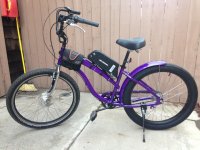I’ve googled and searched but to no avail. I can’t find a 36V 350W front hub motor. Seems like it would be a simple thing to find but no! Anyone have a source for this type of thing? Bonus points if the power is coming out on the left side (same side as the disc brake).
Thanks!!
Thanks!!



